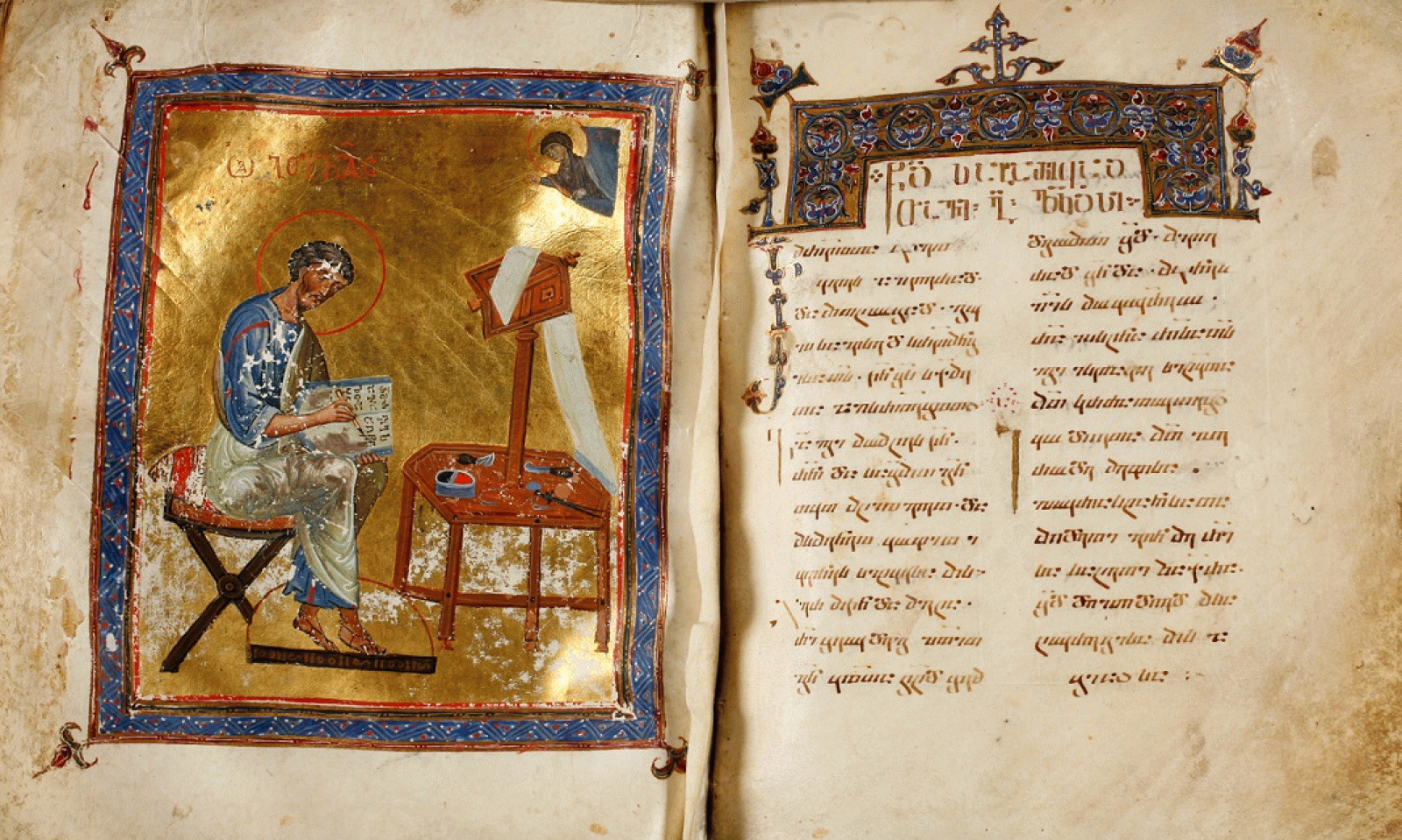Georgia Project Lecture Series
Antony Eastmond:
Byzantium and Georgian art: commonwealth or colonialism in the Caucasus?
Aesthetics, Art, and Architecture in the Caucasus Lecture Series
In cooperation with the George Chubinashvili National Research Centre for Georgian Art History and Heritage Preservation

St Luke (Alaverdi Gospels, A-484, fols156v-157r; photo: © K Kekelidze National Centre of Manuscripts, Tbilisi)
The relationship between Georgia and Byzantium is at the heart of many studies of Georgian art from the tenth to fourteenth centuries. Scholars have traced individuals, images, objects, ideas and iconographies as they have moved between the two states, particularly in the tenth to thirteenth centuries, when they grew theologically, culturally and politically closer.
In this talk I will consider again the nature of this relationship, concentrating in particular on the production of manuscripts, which are often downplayed in studies of Georgian art for lacking “original quality […] because the art of illumination was more dependent on foreign models” (to quote Gaiane Alibegashvili). I will examine her notions of the ‘original’ and the ‘foreign’, and how they relate to the labels ‘Byzantine’ and ‘Georgian’ themselves. I will argue that the slippery nature of these terms means that we fundamentally misunderstand the perception of art in Georgia. I hope to challenge some ideas about the originality and ‘Georgianness’ of Georgian art.
Antony Eastmond is AG Leventis professor of Byzantine art history at The Courtauld, University of London. Until September last year he was also Dean and Deputy Director. He was fortunate to begin his PhD in 1989, which coincided with the fall of the Soviet Union. The political changes which opened Georgia, and the welcome he received from so many Georgians since 1990 made Georgian art the obvious choice of field to research. His studies have focused on the arts of Georgia and the eastern edges of the Christian world, and the interactions between confessions, faiths and cultures. His books have examined royal imagery in Georgia, the empire of Trebizond and the world of Tamta Mkhargrdzeli in the thirteenth century. He is now thinking more generally about the role of art in the history of Georgia.
15. Juni 2021, 15:00 Uhr
The event takes place online.
To participate please register in advance via Zoom:
https://zoom.us/meeting/register/tJMuceCtrzIrEtLGTQ3smG4ExqHArEBjoun-
After registering, you will receive a confirmation email containing information about joining the meeting.
Hinweis
Diese Veranstaltung wird durch Fotografien und/oder Videoaufnahmen dokumentiert. Falls es nicht Ihre Zustimmung findet, dass das Kunsthistorische Institut in Florenz Aufnahmen, auf denen Sie erkennbar abgebildet sein könnten, für die Veranstaltungsdokumentation und Öffentlichkeitsarbeit (z.B. Social Media) verwendet, bitten wir um eine entsprechende Rückmeldung.


